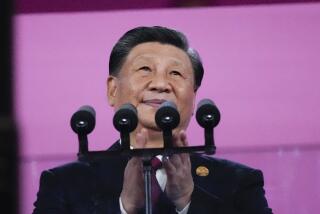China Gets a Reverse Path to Secrets
There are clear winners and losers stemming from the incident in Hainan. The People’s Liberation Army has gained valuable knowledge and technology from the United States with which to protect its secrets and understand how Washington uses its own. The Chinese government has put a finer point on its geopolitical position.
China is undergoing a major modernization of its military forces, focusing most heavily on developing a navy capable of operating from its 7,400-mile shoreline far out into the South China Sea. Some of the technology on board the U.S. Navy EP-3 could play well into their efforts. Beijing has been working to overcome its deficiency in protecting and intercepting military communications and radar traffic--two things the EP-3 was designed to do. The electronic capabilities they might steal would have taken them years to develop on their own.
The U.S. spy plane on Hainan island could provide Beijing not only with technology and information to help hide its own military activities from the U.S. and others but also with critical knowledge of how to monitor other countries’ military operations and gauge their motives. Although an increasingly difficult task, technological know-how gained from reverse engineering--breaking down and reformulating the electronic components and other high-tech eavesdropping devices--could propel China and its military further toward its long-term goal of being a major conventional military power.
The EP-3 system is designed to detect and classify a wide range of electronic signals, from satellite transmissions to radar waves. That technology could be used to block China’s own emissions and prevent the U.S. and others from listening in. By knowing the frequencies the U.S. zeros in on, Beijing can set about developing effective counter measures.
It’s likely that missions flown by the EP-3 were specifically for information gathering of this sort. U.S. crew members were most likely listening for emissions from a new class of submarine--two vessels specifically. One is a Russian designed Kilo-class submarine, equipped with anti-ship weapons. The other is a more powerful, 6,000-ton Victor III submarine. It is designed to launch cruise missiles while submerged, a feat the Chinese navy has long been incapable of mastering. If it has in fact launched such a sub, U.S. aircraft carriers in the area would become vulnerable. Thus the mission, and thus the Chinese insistence that the U.S. stay away. Sources inside China confirm that the Chinese military’s sharp reaction to the incident was because of Beijing’s desperation to keep the tests under wraps. The technology gleaned from the U.S. spy plane may help them do just that.
One of China’s main military objectives is in the area of intelligence. “Beijing’s highest priority for strategic modernization is in the realm of information,” says Mark Stokes of the Army War College’s Strategic Studies Institute. “One of the most important pillars in China’s quest for information dominance is denying an adversary information on [military] plans, force deployments and vulnerabilities.”
The EP-3 landing provided the perfect opportunity to push forward with that priority. And China is equipped with one skill that will make it happen: a mastery of reverse engineering. Reverse engineering has come in handy to the Chinese on a number of occasions, most recently when it reportedly pilfered U.S. nuclear weapons secrets.
The extent to which China can reverse engineer the EP-3’s onboard systems will probably depend on two factors: how much the crew destroyed before landing and how much of the aircraft’s high-tech systems are software-based versus hardware-based. The software is the prize because it is computer code that allows the aircraft to process what it is listening to, while the hardware is not as important from an intelligence perspective.
While the EP-3 is the most advanced aircraft of its kind, much of its technology is old. The fleet has gone through a number of upgrades to introduce the latest in digital processing capabilities, but it still depends highly on more conventional--even analog--eavesdropping technologies that are much easier to reverse engineer. The Chinese, long thought to lag behind Western intelligence gathering ability, may not lag much longer.
Whether it was happenstance that the U.S. spy plane and the Chinese fighter jet collided, or if it was an orchestrated maneuver, China reaped multiple benefits. Beijing played upon the emotions of Americans and tested its new president. China assumed a new position of power. And it probably walked off with a technological advancement capable of preserving its underwater secrets and preventing the U.S. from successfully completing the very tasks those U.S. reconnaissance flights were meant to execute.
More to Read
Sign up for Essential California
The most important California stories and recommendations in your inbox every morning.
You may occasionally receive promotional content from the Los Angeles Times.










